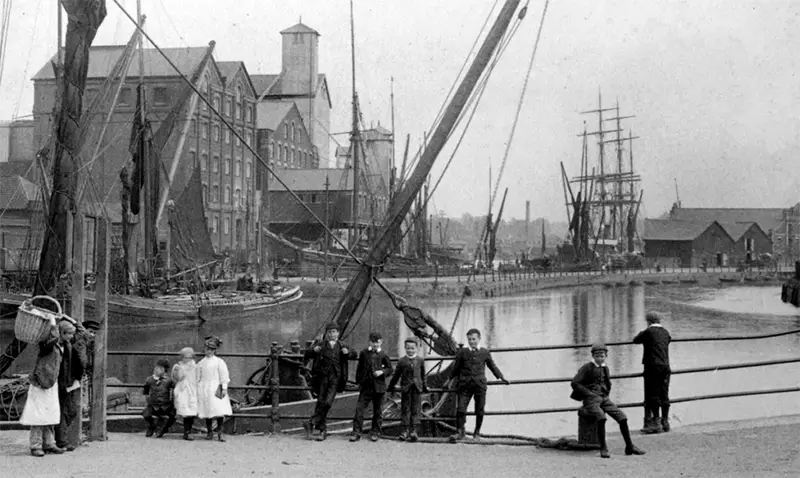
Stoke Bridge Wharf is one of Ipswich’s most historic landmarks — and now, its stories are coming to life. With the Dock Stories app, you can step back in time and experience Ipswich’s maritime past through the voices of the people and pioneers who shaped it.
Download the app today to immerse yourself in history, or scroll down to explore the fascinating story of this remarkable location.
Ipswich is England’s oldest continually inhabited port town, and the river Orwell is its lifeblood.
Like most port towns and cities, Ipswich’s economy has always been dependent to some degree on its relationship with the river. But to understand the shape and function of the harbourside today, we need to look at its history.
Over 1500 years ago, after the Romans left Britain, a new settlement began to grow around a crossing point on the river Orwell.
That crossing point was Stoke Bridge, and the settlement became Ipswich.
Today, Stoke Bridge remains a key entry point to the town centre and the waterfront from the south side of the town for residents, commuters, visitors and tourists – but few who cross the bridge realise its historic significance.
We have evidence of international wine trade from St Peter’s Dock, right next to Stoke Bridge, dating back to the 7th century. We know from excavations at nearby Sutton Hoo for example, that early longships of incredible design sailed in and out of these shores at that time.
Having survived Viking raids in the 9th and 10th centuries, Gippeswyk, as it was first known (literally meaning ‘place at the gap’) was granted town status by King John by Royal Charter in 1200. The town went on to prosper as a Hanseatic port from the 12th century, and then as a very wealthy and powerful centre for the East Anglian wool trade and for shipbuilding in the 14th-16th centuries.
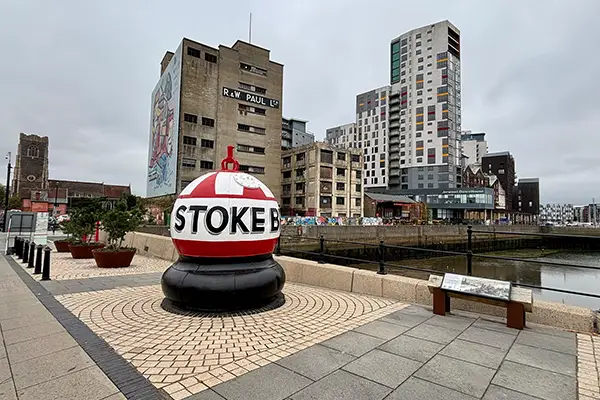
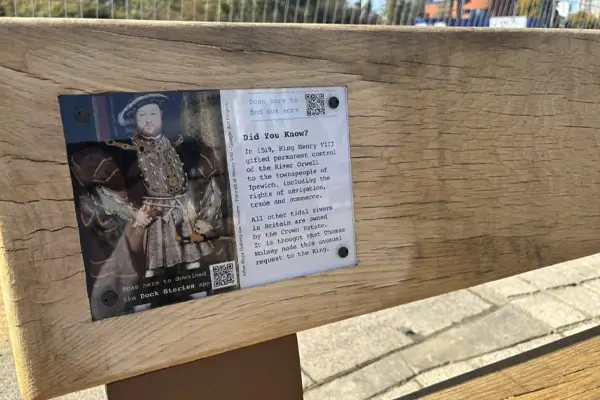
In 1519 Henry VIII did something very unusual when he gifted the bed of the River Orwell to the people of Ipswich on the recommendation of Thomas Wolsey, his Lord Chancellor.
Ipswich’s most famous son, Wolsey, had high influence in court at that time and pressed for the King to grant dedicated navigation and trading rights to Ipswich, which causes controversy to this day! The Orwell is the only tidal river in Britain not owned by the Crown Estate.
A shift to farming as the main local industry developed in the 17th and 18th centuries, dominating trade, paving the way for Ipswich’s status today as the leading agricultural export port in Britain.
In the 18th century, the docks had begun to silt up, and by the time of Queen Victoria’s reign in the first half of the 19th century, with the anticipated arrival of the railway, there was a clear need to improve navigation of the Orwell, and facilities for commerce.
The Ipswich Dock Act, which laid the groundwork for the creation of an impressive new Wet Dock of pioneering design, was the first to receive royal assent by the new Queen in June 1837. Engineer Henry Palmer was selected and he commissioned a young surveyor, Edward Caley, to prepare a set of detailed survey and elevational drawings of the medieval waterfront.
Palmer’s plan involved a new channel or ‘Cut’ for the river, empounding 33 acres of high-level water dock to be accessed through lock gates, with new brick and stone capped quays to replace the old medieval wooden staging, which remain in place today.
When the Wet Dock scheme was completed in 1842, it was the largest contained expanse of water in the country, and with the arrival of the railway, industry and commerce flourished in Ipswich. The population increased rapidly from this point and several exceptional Victorian buildings were established, giving Ipswich town centre much of the character we know now.
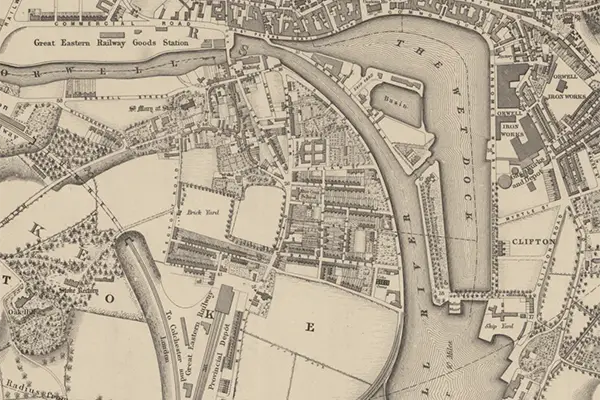

The Wet Dock remained a busy waterway until the middle of the 20th century when the new floodwall effectively prevented the handling of cargo.
Up until the 1970s, an extensive railway connected all of the quays across the dockside. Many people in Ipswich remember the railway, and a much dirtier, noisier and more smelly waterfront than the one we see today.
Now transformed from the historic Wet Dock, Ipswich’s beautiful harbour continues to attract vessels of all kinds.
The ‘Stoke Bridge Wharf’ project shines a light on the importance of the bridge, the harbour, and the river Orwell, using augmented reality and an app called ‘Dock Stories’.
Download the app now, and immerse yourself in Ipswich’s maritime past, brought to life by the voices of the people – and pioneers – who shaped history.
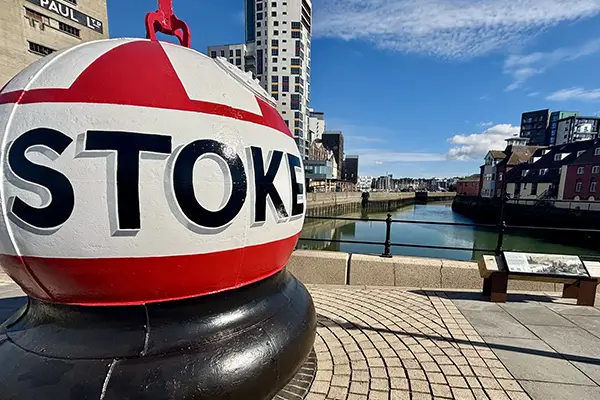
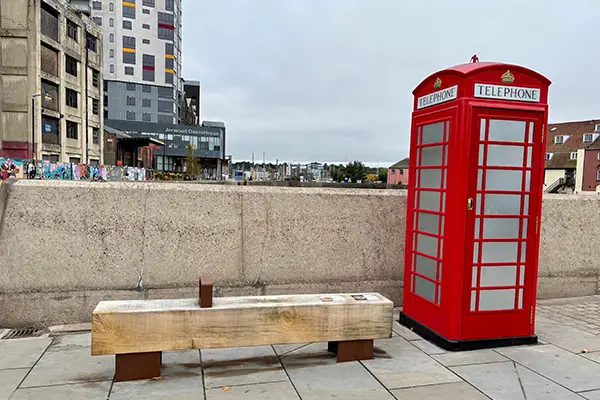
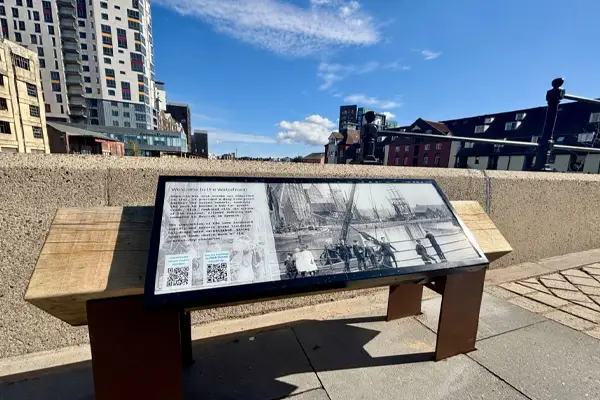
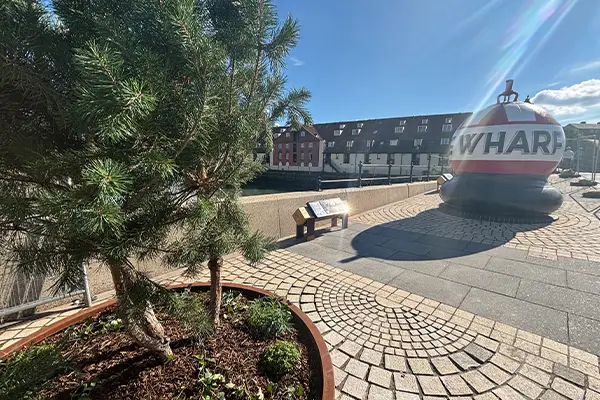
The Stoke Bridge Wharf improvements were funded by Suffolk County Council’s PDP Ipswich Investment Fund, and the ‘Dock Stories app’ by Ipswich Borough Council, with both aspects supported by Packaged Living, developer-operator for Merchants Yard nearby.
Charlotte Norman at AREA Landscape Architects led on Stoke Bridge Wharf design and James Lee Burgess on research, development and production of the Dock Stories app. Kath Cockshaw project managed both for Ipswich Central.

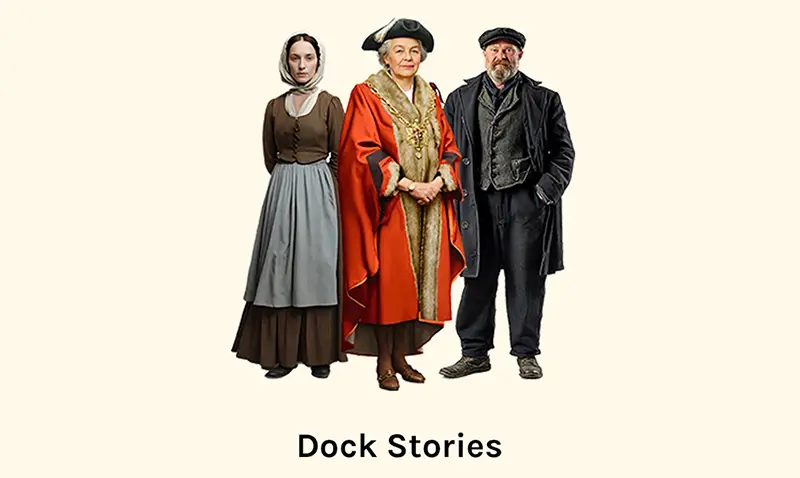
Step back in time with the Dock Stories app by Urban Tech Creative, and experience the history of Ipswich’s docks like never before.
Once a bustling centre of trade, industry, and innovation, the docks are now brought vividly to life through immersive audio storytelling.
Hear the voices of dockworkers, sailors, and locals whose lives shaped the beating heart of Ipswich’s maritime past — and discover the hidden stories that still echo along the waterfront today.
Brought to you by Ipswich Central, the Business Improvement District (BID) for the town centre and waterfront thanks to Ipswich Borough Council and Towns Deal funding.
The copyright of all content on this site, including images, belongs to Locus Management Solutions Ltd. Company registered in England.
Registration No: 5339846. Registered Office: The Master’s House, 19 Lower Brook Street, Ipswich, Suffolk IP4 1AQ.